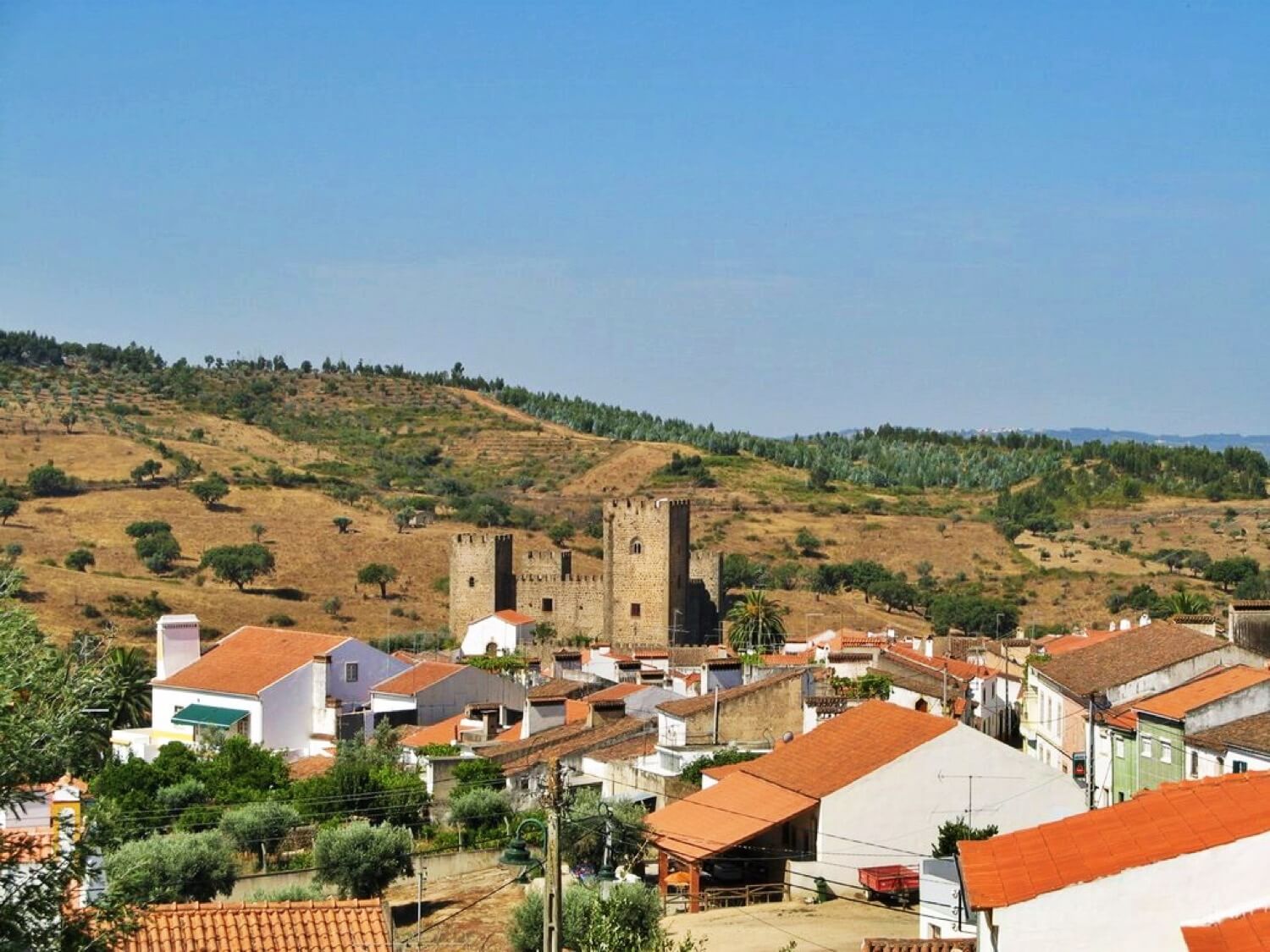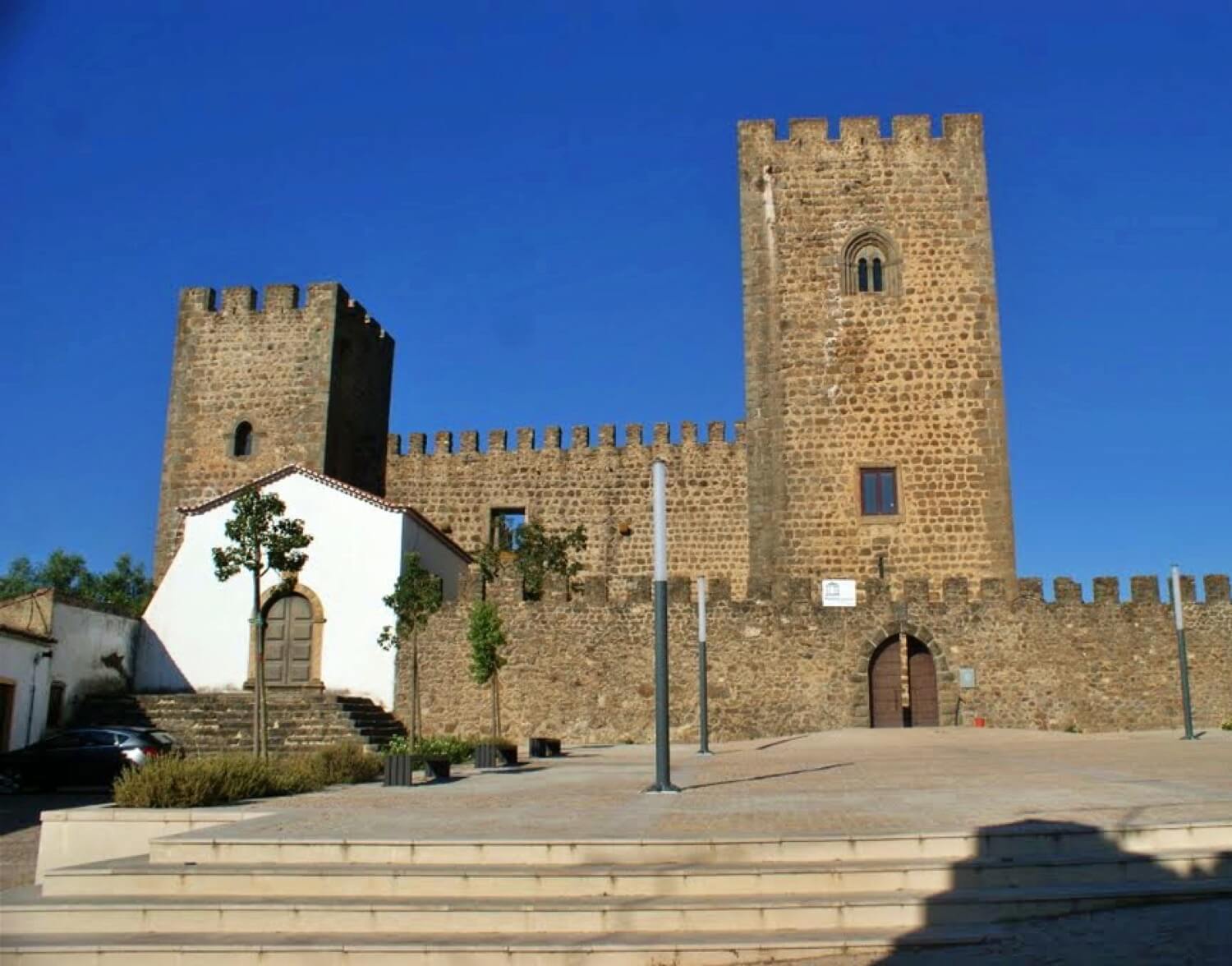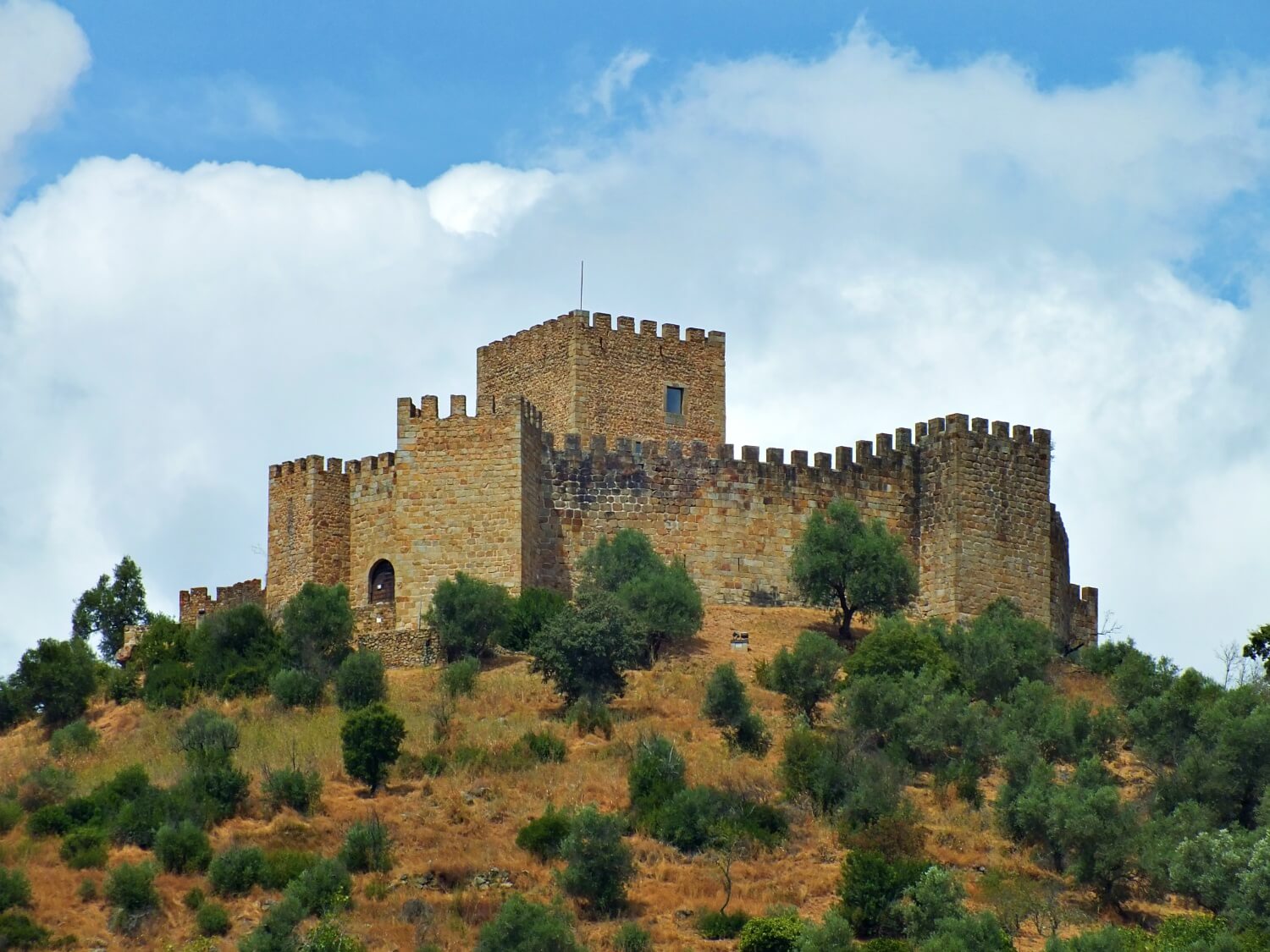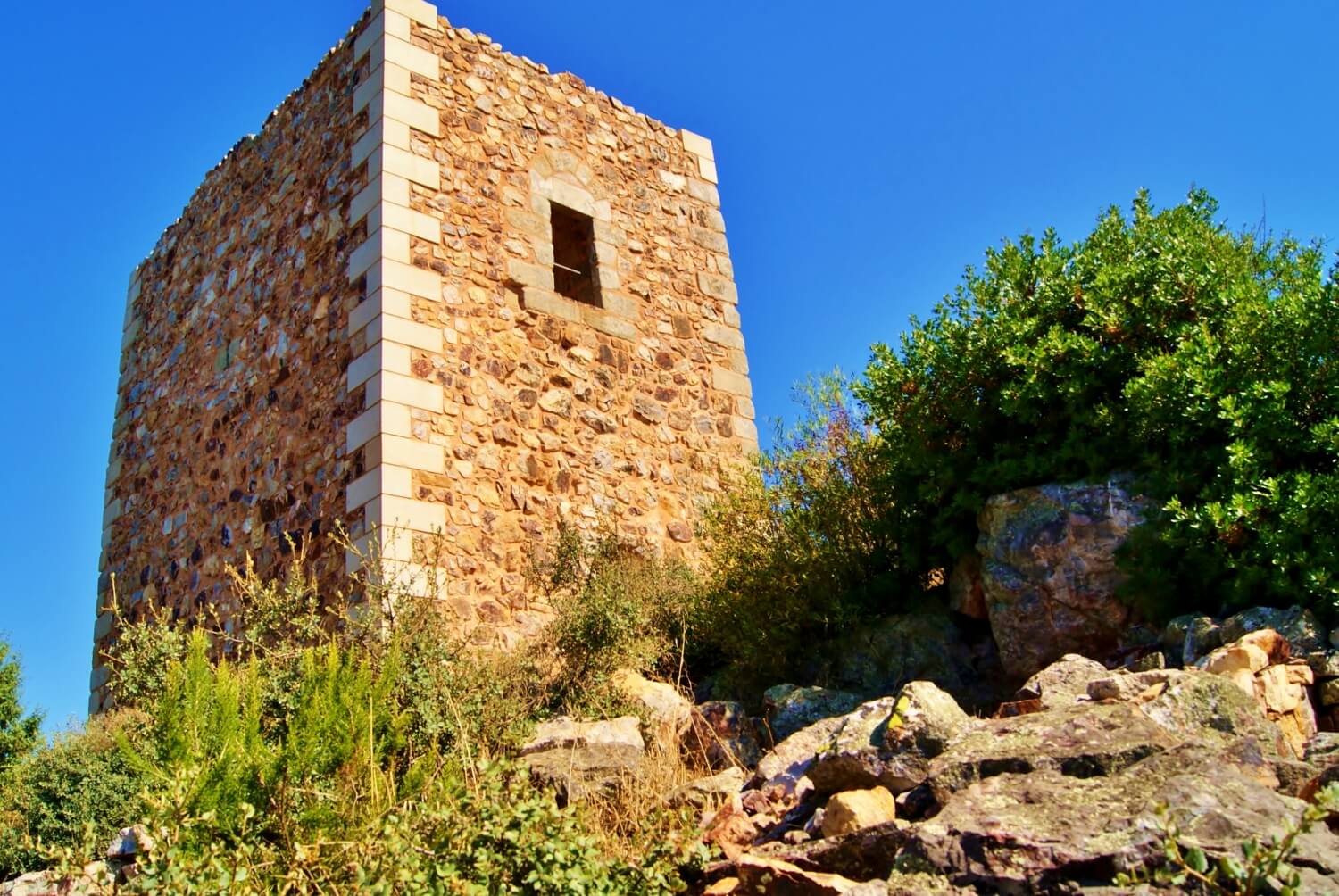Castle of Amieira do Tejo
Amieira do Tejo Portalegre Portugal
castle, chateau
Castelo de Amieira do Tejo
Amieira do Tejo Portalegre Portugal
castle, chateau
The Amieira do Tejo Castle is a Portuguese castle in the civil parish of Amieira do Tejo, municipality of Nisa, in the antique district of Portalegre, approximately 200 kilometres from the city of Lisbon
History
In 1232, owing to a regal charter issued by King Sancho II, the dominion of the Knights Hospitaler expanded their influence into the south; the religious order expanded into the villas of Amieira, Gavião and Crato
O Castelo de Amieira, também referido como Castelo da Amieira, no Alentejo, localiza-se na freguesia e vila de Amieira do Tejo, no concelho de Nisa, distrito de Portalegre, em Portugal
Previous names
Castle of Amieira do Tejo, Castelo de Amieira do Tejo
Description
The Amieira do Tejo Castle is a Portuguese castle in the civil parish of Amieira do Tejo, municipality of Nisa, in the antique district of Portalegre, approximately 200 kilometres from the city of Lisbon
History
In 1232, owing to a regal charter issued by King Sancho II, the dominion of the Knights Hospitaler expanded their influence into the south; the religious order expanded into the villas of Amieira, Gavião and Crato. In Crato, they carried out construction projects, to establish their institutional seat, just after the donation.
The construction of the castle in Amieira only developed a century after the Hospitalers had taken possession of the territory. Its construction was the responsibility of Álvaro Gonçalves Pereira, son of the Archbishop of Braga Gonçalo Pereira, prior of the Order of the Hospital and father of the future-constable of the kingdom, Nuno Álvares Pereira. It was Gonçalo Pereira who had originally been responsible for transferring the Order from Leça do Bailio to Crato e Mártires (in 1356). The castle of Amieira was constructed as part of the settlement's place in the new function of the Order: to assist the travelling pilgrims. Three years following this change in roles, King Peter I visited the fortress, whose construction was already quite advanced. But, by 1362, the project had not been concluded: Álvaro Gonçalves Pereira had taken a lot of pacience in the construction and evolution of the castle, until his death in 1375.
The fortress suffered various modifications over the centuries. During the reigns of King John II and King Manuel, there were remodelling to adapt the structure to the new military requirements. Simultaneously, it served as a prison, due to its excellent construction. Losing its military function, due to the change in the lines of defence over time, the castle fell in importance. In the 18th century, a great part of the historical structure was abandoned, and part of the fortress was adapted for civil residences. By this time, the prison tower was partially recuperated, but its military functionally was completed abandoned.
In the 19th century, the central courtyard was converted into a local cemetery, which continued to be used in this form until the 1940s, when the DGEMN promoted the castles reconstruction. It has been listed as a National monument since 10 November 1922.
Architecture
The castle is accessed from the Praça de Nun'Alvares, and can be reached from the EN 359 motorway, or alternately from the A6, existing from Torres Novas, IP6 until Abrantes, and the EN 118 roadway towards Nisa (exiting in Arez). The castle is found in an urban environment, isolated in a terrain with manicured gardens and space for parking. It is sited on a parcel that is relatively planar, except on the western limits where it is inclined, with houses to the north and east, while agricultural fields and orchards to the south and west.
The Castle of Amieira is the prototypical Gothic Portuguese castle. It is located on a relatively low hilltop, in a rectangular plan consisting of a walled courtyard with four towers located at its apexes. The prison block which is located in the largest of these towers, is located above the principal entrance to the fortress. In comparison to the isolated Romanesque cell blocks, the tower also served the defence of the castle, in an area that was most vulnerable. The central courtyard, which is an ample space, allows the space for placement of troops and easy movement. The castle also provides two levels of complementary defence, as indicated in 14th century documentation: a pit (which has not survived to today), and a barbican to the rear of the fortress, that formed a secondary landing in case of siege.
Encountered by one of the towers, but outside its walls, is the Chapel of São João Baptista, which dates back to 1556 (from its doorway inscription). The interior has a vaulted decorated ceiling, with an image of the patron saint (Saint John) and a retable from the late Renaissance period.
O Castelo de Amieira, também referido como Castelo da Amieira, no Alentejo, localiza-se na freguesia e vila de Amieira do Tejo, no concelho de Nisa, distrito de Portalegre, em Portugal.
A antiga povoação de Amieira, a meio caminho entre Belver e Nisa, integrava a chamada Linha do Tejo, linha de defesa da fronteira, na margem sul do rio Tejo. Constituía-se numa das onze vilas que a Ordem dos Hospitalários detinha na região.
História
O castelo medieval
No contexto das lutas pela Reconquista cristã da Península Ibérica e da formação do reino de Portugal, o rei D. Sancho II (1223-1248) fez uma expressiva doação de terras à Ordem de São João do Hospital de Jerusalém, incluindo as vilas de Amieira, Belver (Gavião) e Crato (1232).
Das três, a última a ser fortificada foi a de Amieira, cerca de um século mais tarde, sob o reinado de Afonso IV de Portugal (1325-1357). A edificação do castelo é atribuída ao prior D. Frei Álvaro Gonçalves Pereira, filho bastardo do Prior da Ordem do Hospital em Portugal, bispo D. Gonçalo Pereira, e pai do futuro Condestável, D. Nuno Álvares Pereira. Algumas obras devem ter sido orientadas por um outro filho, D. Pedro Pereira, e não se encontravam concluídas em 1359 conforme se depreende de uma carta régia enviada nesse ano a D. Álvaro, tendo sido concluídas em 1362.
Durante a Crise de 1383-1385, o então Prior do Hospital, D. Pedro Pereira, no início de 1384 reconheceu a autoridade de D. Beatriz, filha de D. Fernando, e, como tal, herdeira legítima do trono português. O Castelo da Amieira, juntamente com outros da Ordem, prestou obediência à Rainha, situação modificada poucos meses mais tarde, por influência do Condestável D. Nuno Álvares Pereira, irmão do Prior, tendo este partido para Castela.
O único episódio militar em que o castelo esteve envolvido ocorreu em 1440. Tendo D. Leonor, princesa de Aragão, se desentendido com o infante D. Pedro, retirou-se, com a cumplicidade do prior, D. Nuno de Góis, para o Crato, tendo invocado em seu auxílio as forças de Castela, que cercaram a Amieira. Diante dessa insubordinação, D. Pedro determinou a ocupação dos castelos do priorado do Hospital nessa região fronteiriça, ordenando a D. Álvaro Vaz de Almada (conde de Abranches), acometer o Castelo da Amieira. Sem oferecer resistência os castelos renderam-se, o prior do Crato e D. Leonor puseram-se em fuga para Castela e a paz foi restabelecida. O Castelo da Amieira passou para as mãos de Pedro Rodrigues de Castro como alcaide ao final do conflito.
Nos séculos seguintes, foram procedidas pequenas obras de modernização sob o reinado de D. João II (1481-1495) e de D. Manuel I (1495-1521), fase em que teria servido como prisão. Data do século XVI a construção de uma capela, sob a invocação de São João Batista (1556).
Do século XVII aos nossos dias
À época da guerra da Restauração da Independência foram erguidas edificações residenciais no interior do recinto do castelo que, abaladas pelo terramoto de 1755, já se encontravam em ruínas em 1747, segundo relato coevo do padre Luís Cardoso. Nessa época tentou-se a recuperação parcial da Torre de Menagem.
Em meados do século XIX, possívelmente em virtude do decreto que proibiu os enterramentos dentro do recinto das igrejas em Portugal (1846), a praça de armas do castelo passou a ser utilizada como cemitério pela população da vila.
Já no século XX, na década de 1920, as dependências do castelo passaram para a responsabilidade do Ministério da Guerra, com quem a Junta de Freguesia celebrou um contrato de arrendamento que lhe permitiu usufruir do monumento. Classificado como Monumento Nacional pelo Decreto n° 8.447, publicado em 10 de Novembro de 1922, na década de 1940 foi objeto de intervenção de consolidação e restauro pela Direcção-Geral dos Edifícios e Monumentos Nacionais (DGEMN), mantendo-se em boas de condições de conservação até aos nossos dias.
Características
De pequenas dimensões, com planta no formato retangular, é considerado um modelo de castelo português no estilo gótico.
As muralhas, ameadas, são reforçadas nos ângulos por quatro sólidas torres e pela Torre de Menagem, de maiores proporções, com planta quadrangular, defendendo a porta da barbacã. Esta torre possui janelas, sendo uma geminada e outra com arco pontiagudo e moldura de toros. No interior, abre-se a praça de armas. No exterior, o conjunto é completado por fosso (hoje aterrado) e uma sólida barbacã de planta quadrangular, de muros ameados.
Fora dos muros, mas adossada a uma das torres, ergue-se a Capela de São João Baptista com portão em arco de volta perfeita com aduelas almofadadas. No interior, apresenta abóbada de caixotões decorada com grotescos e uma imagem do padroeiro, além de um retábulo tardo-renascentista.
Useful information
Free
2.00 EUR
Information tables
-
Nearby castles




